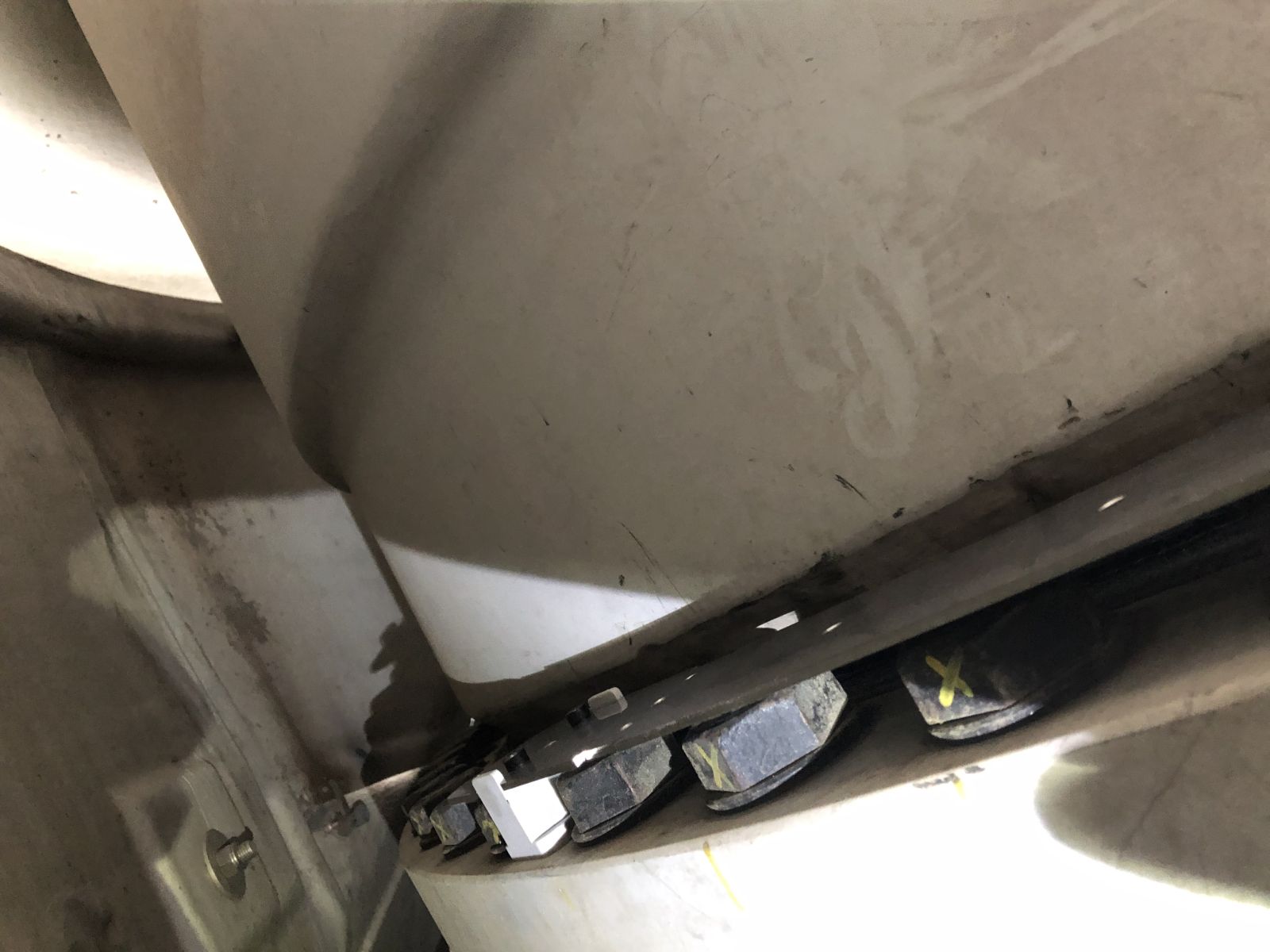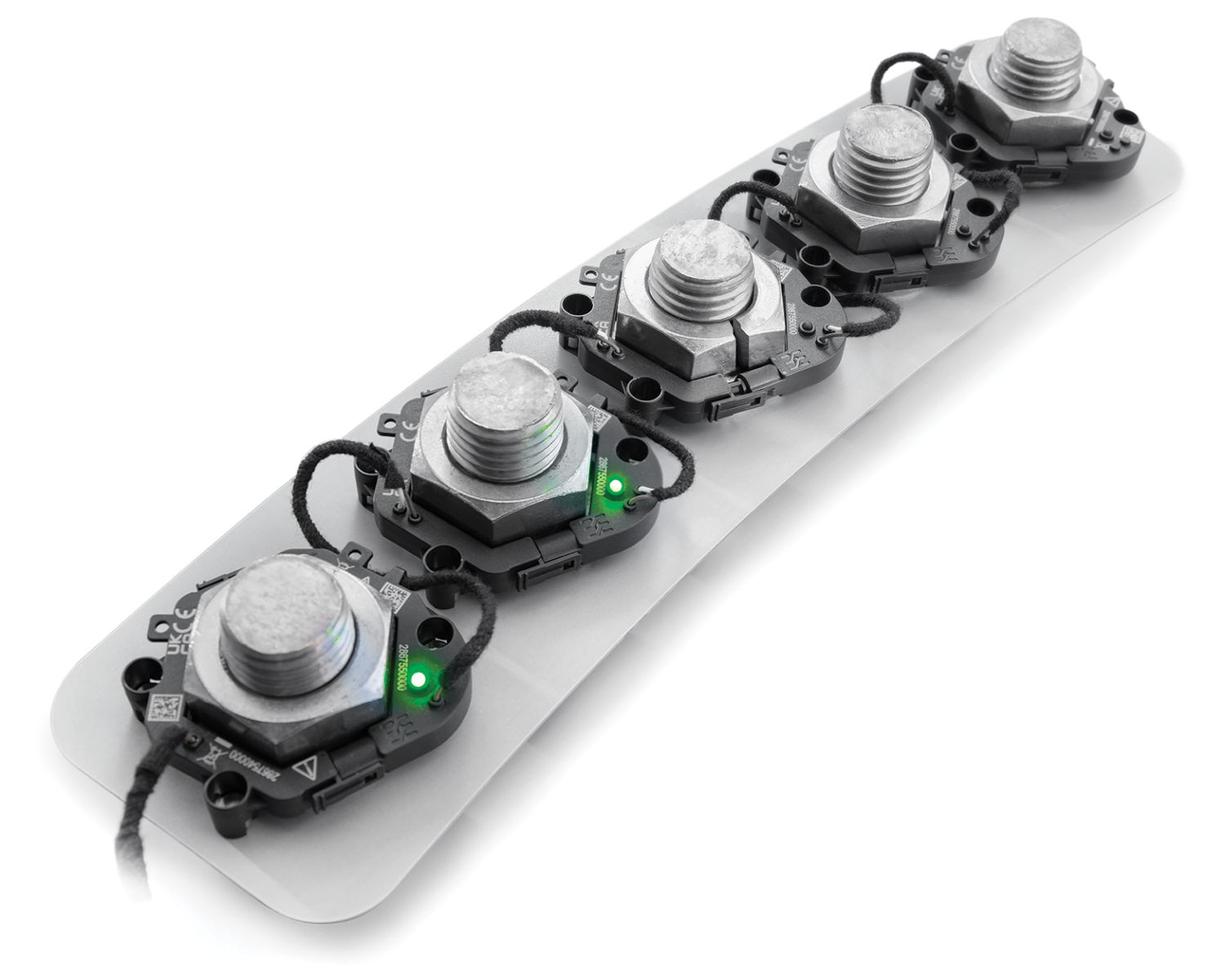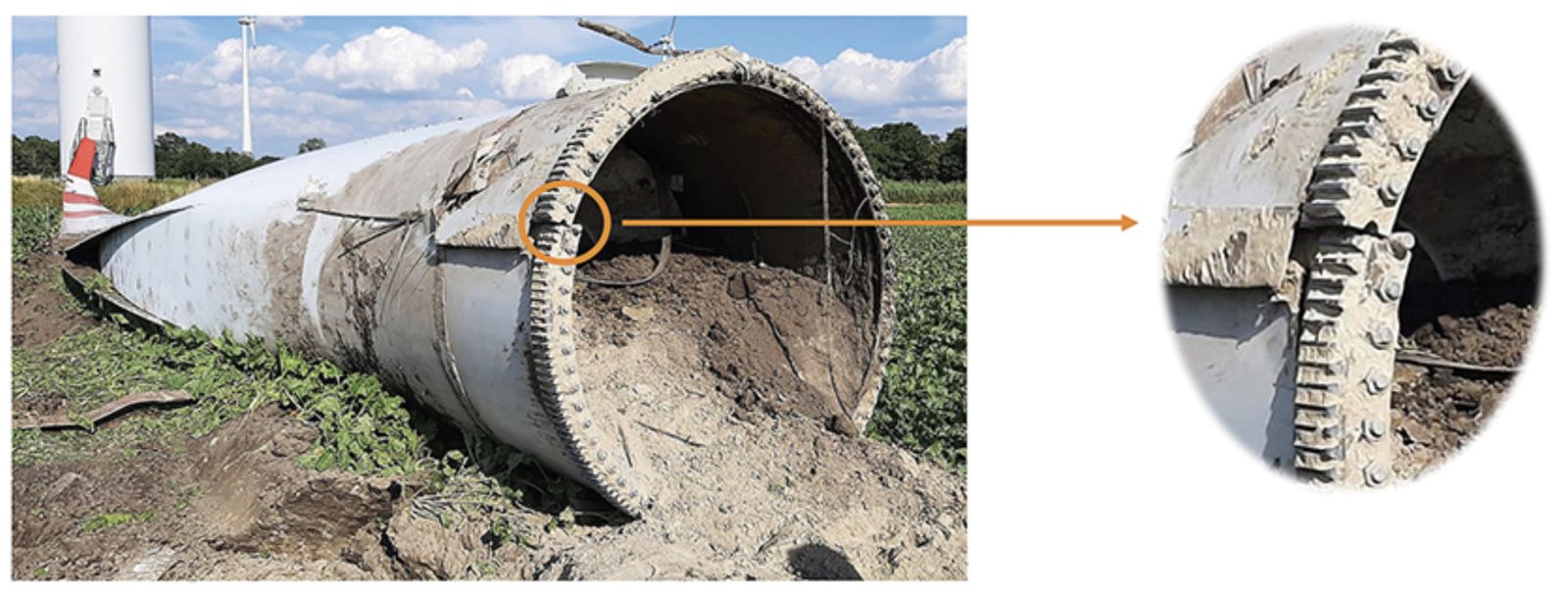Why Monitoring Blade Bearings is Crucial
Pressing real-world issues are faced by wind turbine operators. Among them, the integrity of wind turbine bolted connections at the blade bearing stands out as a critical concern. The role of condition monitoring systems for blade bearings (CMBB) emerges as a pivotal solution in addressing this challenge.
A primary focus has been on providing solutions for the aftermarket, particularly in monitoring blades, and detecting faults in blade bearings. The goal has been to support O&M departments in reducing costs, minimizing operational downtime, and decreasing the requirement for labor-intensive manual inspections.
Bolt integrity
Maintaining the integrity of bolted connections is essential for the safe and efficient operation of wind turbines. As these structures endure harsh onshore and offshore environments, any bolted connection failure, such as cracks or loosening, significantly jeopardizes the safety and performance of the entire turbine system. Additionally, these critical connections can also present safety hazards to nearby communities, especially if the turbines are situated close to roads or populated areas.

A Detection Plate on the outer ring of the blade bearing monitors loose and broken bolts and keeps bolts from falling out.
Ensuring that bolted joints remain properly tightened and maintain the correct preload throughout a turbine's lifetime is one of the major challenges in the wind industry. Environmental factors like vibration, fatigue, corrosion — along with the high loading the bearing experiences during the life of the turbine — can weaken the reliability of these connections over time. With approximately 25,000 bolts in a single turbine, the most crucial connections can be found in the blade bearings and tower segment bolts. A weak connection in the blade bearing, for instance, could lead to the blade disengaging from the turbine and falling, potentially resulting in catastrophic consequences.
Importance of CMBB
There have been confirmed incidents in the wind industry where blades have disengaged and fallen due to weak bolted joints and cracks in the blade bearings. It was evident that a comprehensive solution was urgently required. This is where CMBB technology comes to the forefront as an innovative automated damage detection system. With its capability to continuously monitor blade bearing health relating to cracks and loosening of the nuts, it provides indications of potential failures at a very early stage.

An LED sensor indicates the specific nut that is broken in the CMBB system.
As failures in blade bearings can occur as early as 2 to 3 years after the turbine starts to operate, swift remediation is required for maintaining an efficient operation. Common failure modes include cracking of rings and hardware. Additionally, the loosening of the bolt and nut connection could result in the bolt falling out of the bore. If a blade bearing crack spreads from the bearing surface into the nut, causing it to crack with a minimum expansion of 2mm, current CMBB systems can automatically detect the broken nut and alert the pitch system to initiate a controlled and safe shut down.
Other CMBB systems are under development, incorporating detection plates or preload force monitoring devices with ultrasound for blade bearing bolt connection monitoring. These are cost-effective solutions, with the nut crack detection upgraded to a more robust design that is IP68 rated, UL, and TUV certified. This product enhancement allows it to withstand diverse environmental conditions, and enables wind farm operators to embrace a proactive maintenance approach by supplying data on which blade bearing to change.
Prior to the introduction of automated CMBB systems, inspecting blade bearings and the bolted connections necessitated labor-intensive and time-consuming manual inspections every few months. However, with the availability of this new technology, asset owners can substantially reduce inspection costs and reduce unplanned downtime by detecting early cracks and loose connections.
The expansion of digitization in renewable energy is undeniable. With Industry 4.0, Industrial IoT, data analytics, and AI leading the way, monitoring techniques are advancing at a rapid pace. Because of this, the focus has shifted from traditional drive train sensor placement to other critical areas, such as sensor placement in the front of the turbine, in the hub, blade bearing, and blades. Upgraded CMBB nut crack detection technology also features an LED indicator that enables technicians to quickly identify damaged blade bearings, further streamlining maintenance efforts. With this technology, wind farm operators can detect early warning signs of impending blade bearing failure.

When undetected, blade bearing failure can result in blade liberation, which can be very costly and time-consuming to repair.
Top benefits of implementing CMBB technology
Beyond preventing blade loss, the success stories of CMBB technology encompass significant cost and time savings for wind farm operators. With demanding operational goals at wind sites and blade risks increasing, physical inspections have become increasingly challenging. By extending the inspection service interval from 3 months to 6 months, this system significantly cuts service and maintenance costs. Avoiding blade liberation is critical, as a blade loss can generate financial setbacks exceeding $500,000. Anticipatory condition monitoring empowers O&M departments to assess risks, efficiently plan maintenance, and make well-informed decisions.
Installing an advanced monitoring system like CMBB is a compelling decision for wind farm owners and operators of any turbine type, as it can lead to thousands of dollars in maintenance savings and improved turbine efficiency. Contributing to cost savings on maintenance, the hardware sensor components are designed with magnets for easy installation with minimal wiring, streamlining the installation process for added convenience.
An additional noteworthy aspect of the upgraded CMBB nut sensor technology is its compatibility with older evaluation boxes in the field. In cases where a CMBB system is already in place, sensors can be upgraded while continuing to utilize the existing evaluation boxes, resulting in further cost savings. CMBB systems can be installed at the turbine production facility or retrofitted on any turbine type in the field.
Looking ahead to the future of wind farm operations, whether onshore or offshore, there is a strong case for considering the implementation of a CMBB system as nearly obligatory to ensure a safe and highly efficient work environment. Remote monitoring of blades and blade bearings is crucial, and the undeniable savings in maintenance costs while prioritizing technician safety are evident reasons to embrace this technology.
Scott Sattler is Business Development Manager – Wind at Weidmüller USA, which manufactures components and customized solutions that reduce downtimes and increase yield.
Weidmüller USA | www.weidmuller.com
Author: Scott Sattler
Volume: 2023 September/October








